—story and photos by Ross Courtney
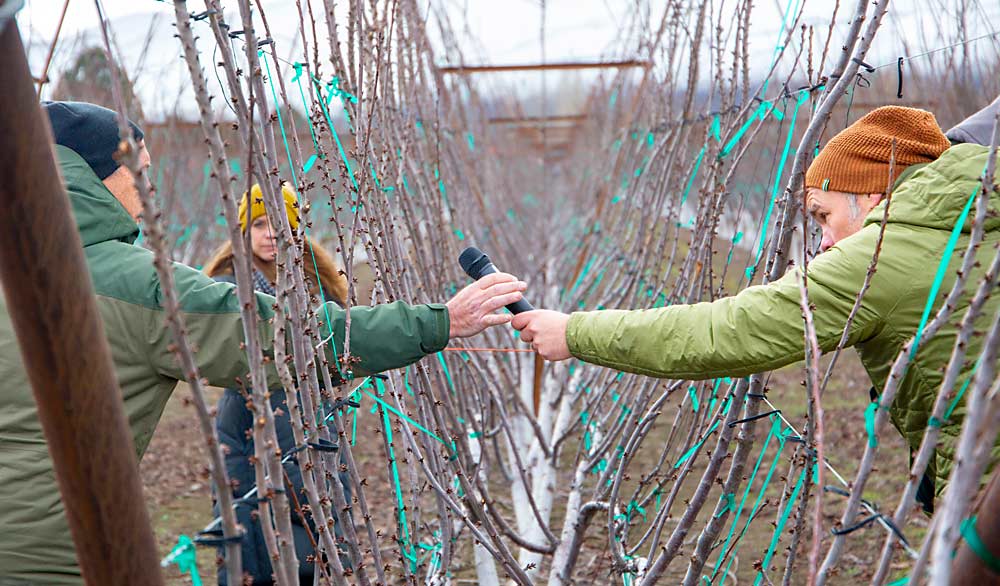
With trees young and old, covered or exposed, UFO or multileader, Central Washington cherry growers are moving toward planar high-density systems and precision crop load management.
“There are different paths and ways of getting there,” said Matt Whiting, a Washington State University tree fruit physiologist who led an International Fruit Tree Association tour in February through the Yakima Valley’s variety of approaches.
Stops included a new orchard with rain netting on the way, a 14-year-old block with freestanding trees on its second system renovation, formal UFO trainings and informal multileaders. At each location, growers discussed their efforts to boost production and reduce labor needs, attempting to adopt many techniques apple growers have standardized to boost efficiency and make way for new tools.
“These planar systems represent the best current thinking in how to build orchards of the future using platforms, mechanical pruning, simplified pruning, etc.,” Whiting said.
Making the old new
Stop 1 was a 2010 planting of Skeena cherries with freestanding trees and thick limbs on Gisela 6 rootstocks in a Washington Fruit and Produce Co. orchard near Zillah.
The productive block has been through two redesigns. Managers first trained to a central leader and then three years later converted to a tunnel system, trying to control vigor and boost sun exposure by tying limbs in an arch above the alleys. The system was common in Central Washington about 20 years ago but fell out of favor after managers struggled to fill space, Whiting said.
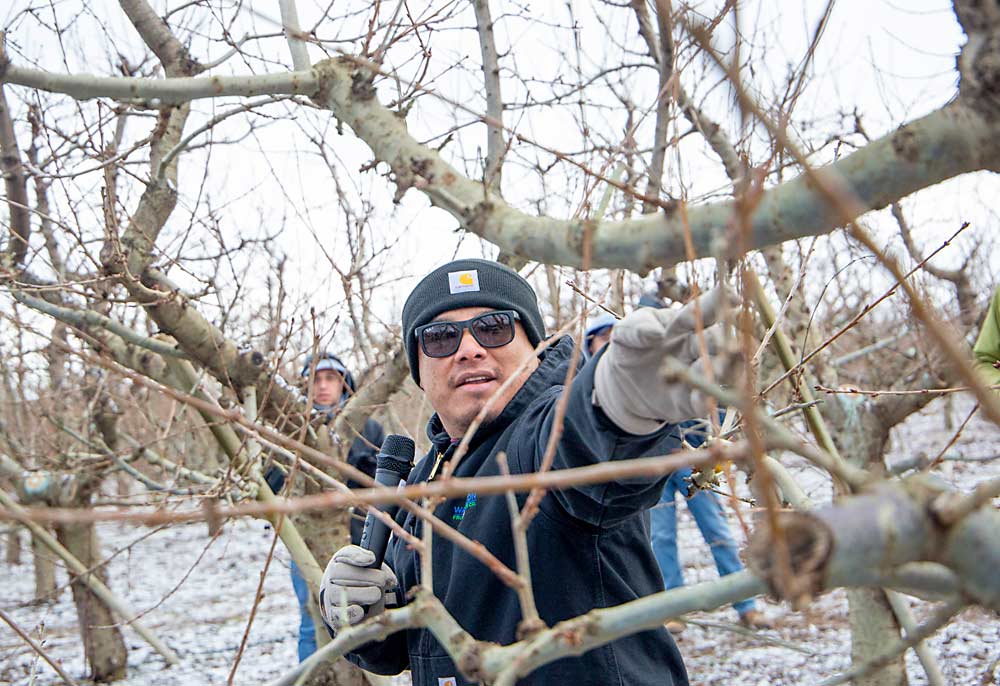
In 2017, crews converted to a varying number of steep leaders, removing thick wood from the center of the trees to create a vase shape, allowing sunlight to reach lower branches and encouraging new growth.
Results have been good, said Orlando Huerta, the assistant orchard manager who began working with the site in 2018. The block has averaged 12 tons per acre over the past four years. “You have to be pretty aggressive with chain saw cuts,” Huerta said.
Huerta and his team also manage crop load with bud and shoot counting, marking sample trees with Sharpie-covered flagging tape. Washington Fruit is known for bud counting and uses a similar method in all of its cherry and apple blocks.
UFOs and multileaders
A stop at Olsen Bros. Ranches featured several varieties on Gisela 6 or 12 rootstocks.
The Benton City producer uses the UFO, or upright fruiting offshoot, system, which involves leaning a single leader horizontally to reduce apical dominance and allow fruiting branches to grow upward.
Olsen Bros. trains into a 70-degree V-trellis at 4-foot spacing, leaning one leader to one side of the row, the next to the other side, so each tree spans 8 feet. Crews keep the system very planar, though when branches break from the leader toward the center, they opportunistically train them to the opposite side of the V.
Nearby, grower Shawn Gay trains cherry trees less formally into two or four leaders, tying them to trellises when they are young and coaxing lateral breaks for fruiting branches with scoring and applications of plant growth regulators.
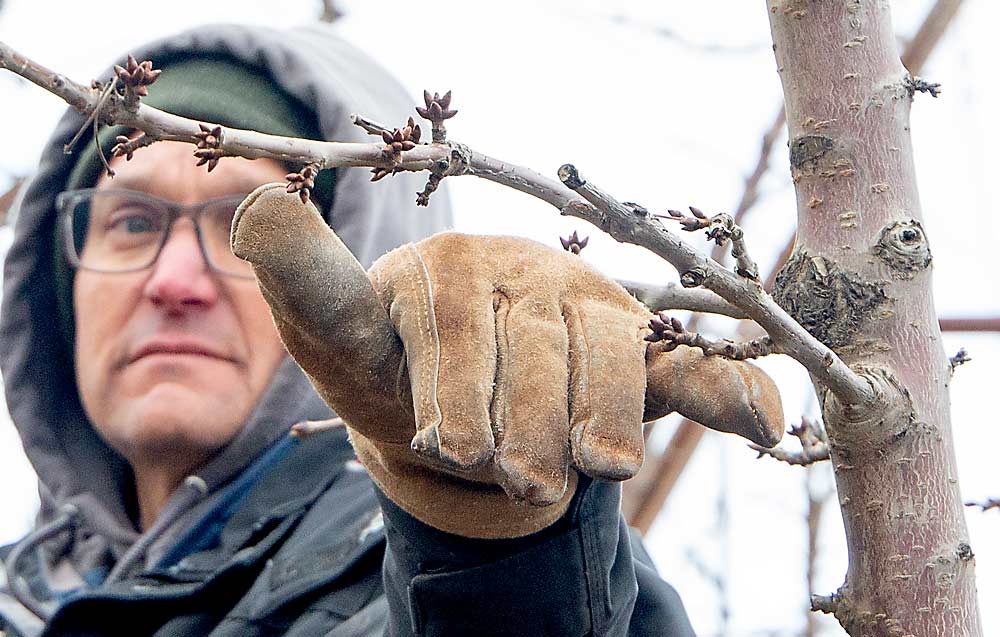
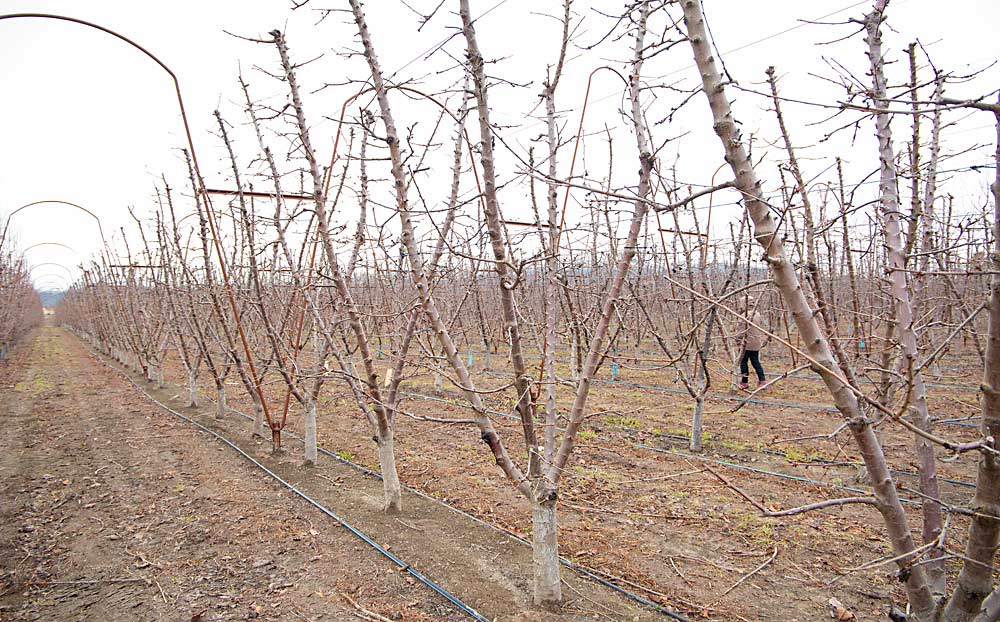
In the fourth leaf, Gay, manager of Finley Cherries, removes the bottom wire — located at 3 feet — to allow workers to more easily move between rows. He never trains the laterals to wires but prunes them to roughly 8 inches to keep fruit close to the leaders.
“I didn’t want to spend the money to tie limbs down,” he said. “I’m just trying to get away from that.”
Also near Benton City, River Valley Fruit showed tour participants a 2023 planting of Santinas on Gisela 6 rootstocks, supported with one row of flexible, plastic “memory wire” that won’t scar the trees.
“The memory wire will come out as soon as the trees are producing,” said Don Olmstead III, assistant general manager of River Valley Fruit.
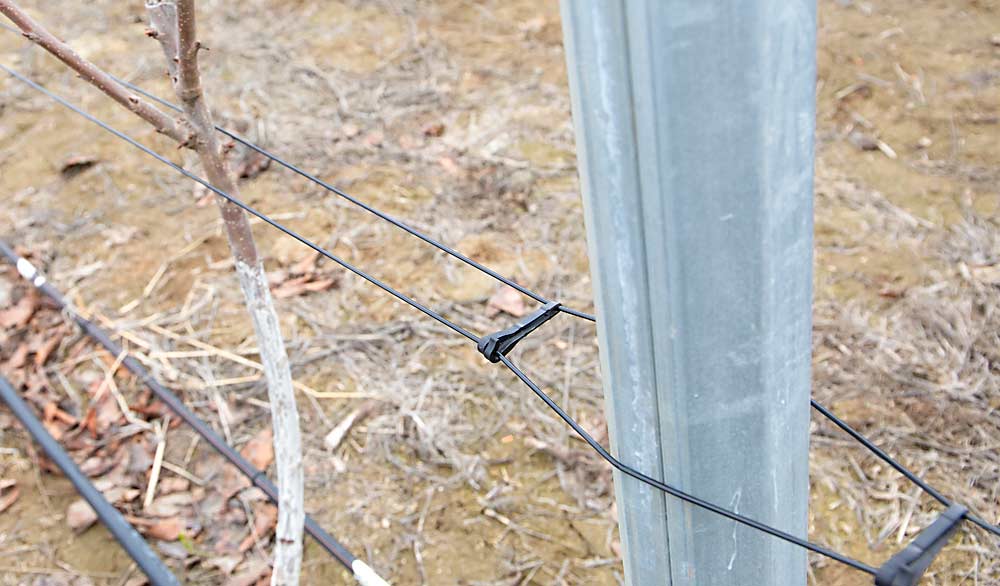
The company planted with octagonal steel posts designed to support multiple cross braces for future trellis wire and caps that will hold a dense-weave netting to protect fruit from rain, frost and wind. The posts were moved from a Grandview orchard that was not suited for the complex, four-direction anchoring required for the heavy steel posts.
Olmstead used PGRs to encourage each tree to push four leaders, but some trees only ended up with three. Rather than fight that, crews just trained those to alternate sides — one tree two-and-one, the next one-and-two.
Sometimes, orchard trees don’t always do exactly what you want, he said.
“You kind of get what you get,” Olmstead said. •

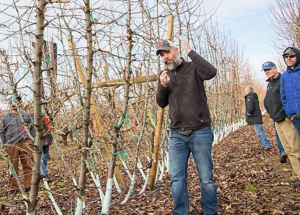







Leave A Comment